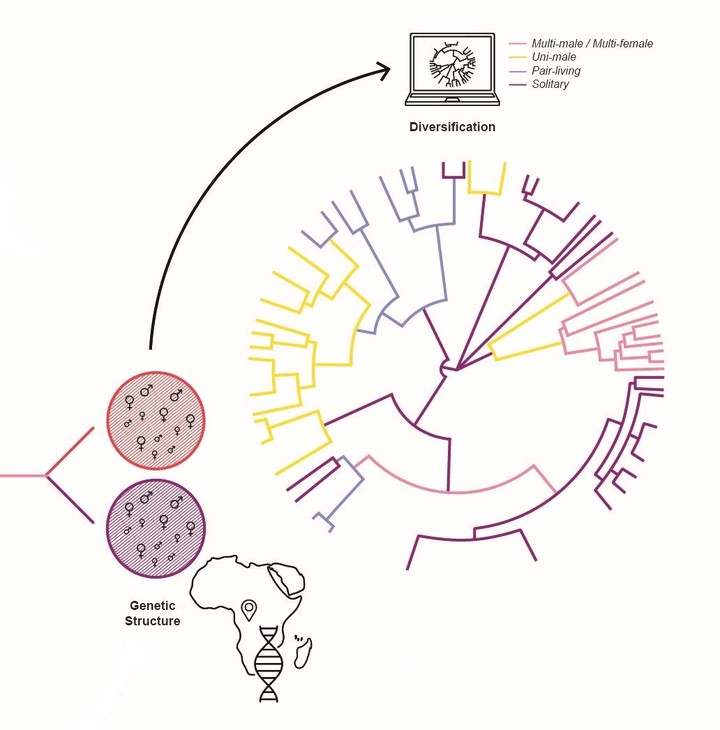One basic assumption when trying to link behavioural traits through genetic structure to diversification processes is that population differentiation forms the initial stage of evolutionary diversification and speciation. This claim is still a matter of debate, because how microevolutionary rates effectively scale up to macroevolutionary rates had not been thoroughly tested. It has just now been shown that there is indeed a positive correlation between population genetic differentiation and speciation rates in New World birds. I aim to confirm this observation that microevolutionary change within species can serve as the source of macroevolutionary differentiation between species by pairing population genetic datasets from hundreds of mammal species (as assembled for question II) with phylogenetic estimates of diversification rate.
Addressing the macroevolutionary relevance of microevolutionary differentiation processes
